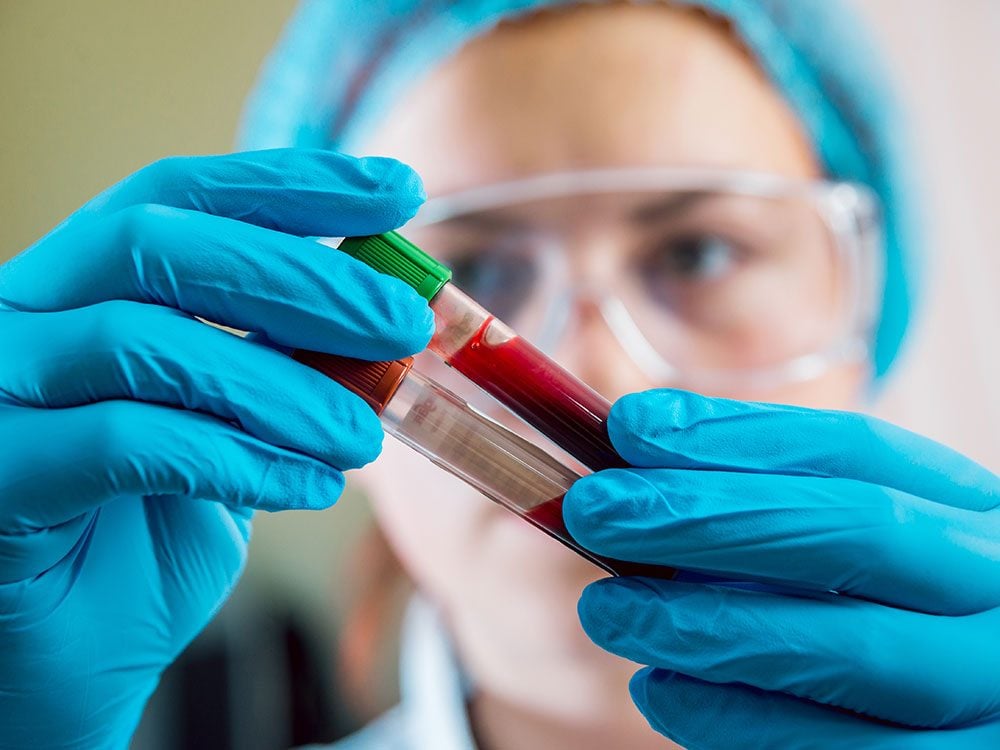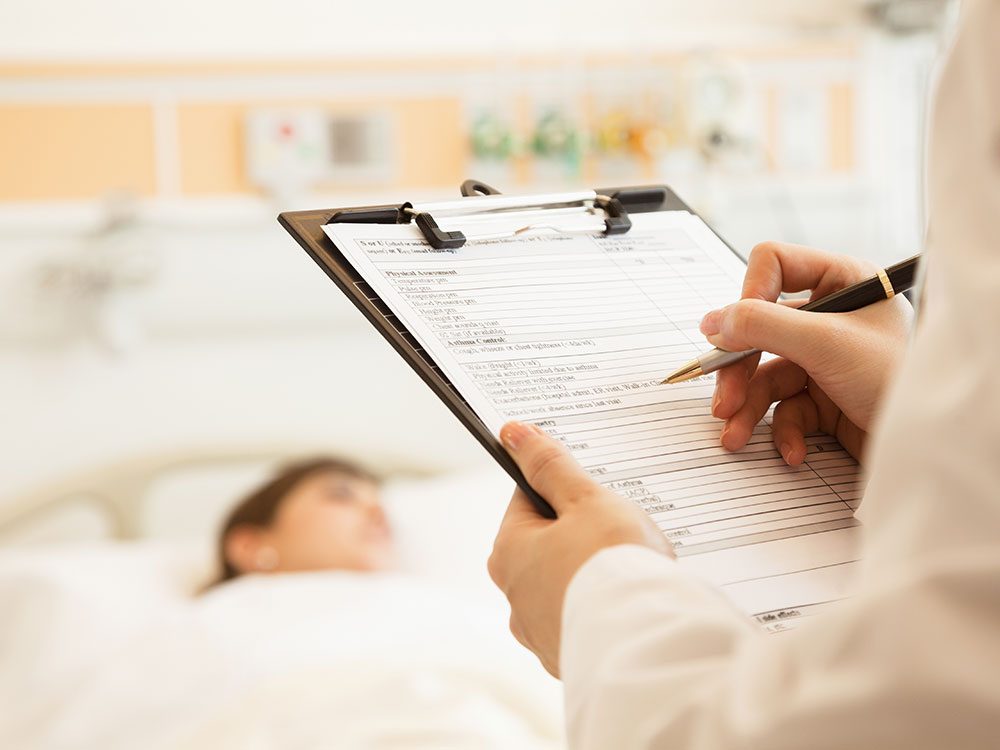
A terrifying medical mystery
The patient: Claire, a 17-year-old high school student from Kingston, Ontario
The symptoms: Abdominal cramps and diarrhea
The doctor: Dr. Jocelyn Garland, a nephrologist at Kingston General Hospital
In August 2016, Claire had just returned from a family holiday in Europe and was looking forward to a few more weeks of summer vacation. But shortly after she got home, she experienced severe abdominal cramps and diarrhea that kept her confined to the house. Over the next five days, the pain intensified. When signs of rectal bleeding appeared, her parents took her to the ER at Kingston General Hospital.
Infectious disease specialists and gastroenterologists examined Claire and discovered that the wall of her colon was swollen and bleeding. Doctors suspected Claire had E. coli (she had eaten hamburgers and raw cookie dough shortly before her symptoms appeared, and either could have been the culprit). When a standard test failed to confirm the diagnosis, doctors sent stool cultures to the Hospital for Sick Children in Toronto for more in-depth testing. The results came back positive for a form of the bacteria.

A one-in-a-million condition
E. coli infections usually resolve on their own, and after two days, Claire’s diarrhea improved. However, other symptoms emerged: her abdomen swelled; she had abdominal cramping; and she began vomiting.
An ultrasound revealed that Claire was retaining fluid in her abdomen. She also had blood and protein in her urine, a sign her kidneys were failing. When severe hypertension set in, she was transferred to the ICU. With most E. coli infections, supportive treatment, such as keeping patients hydrated, is all that’s necessary, says Dr. Jocelyn Garland, who was called in to consult on the case. “You treat various organs as they become affected and wait for the bacteria to run its course. But Claire wasn’t responding to treatment—she was critically ill.”
E. coli is relatively benign, causing mild indigestion, but on rare occasions it can spark a reaction that produces a life-threatening toxin. “It attacks the lining of the blood vessels and leads to severe, multi-organ dysfunction,” Garland says.
Doctors tried plasma therapy to replace the infected blood, but after five days, Claire was still in constant pain. Nine days after her symptoms first appeared, her kidneys failed. Blood tests showed that her complement system—a defence mechanism that kills bacteria—was active. At the same time, her red blood cells and platelets were being destroyed, and she developed organ damage. After some research, Garland became convinced that Claire had atypical hemolytic uremic syndrome (aHUS), a disease caused by uncontrolled activation of the complement system. “It’s a one-in-a-million condition,” she says. And in up to 40 per cent of cases, it can be deadly.
Here are 20 symptoms you should never ignore.

A miraculous recovery
“Her parents said to me, ‘We think she’s dying,’” Garland recalls. “I told them, ‘Well, I’m pretty stubborn.’” Garland discovered that an off-label medication used to treat another rare blood disorder had been used to successfully resolve aHUS by shutting down the complement system. After consulting with other specialists and sending Claire’s blood to an overseas lab that confirmed her complement system’s activity level, she decided to try it.
After the first dose, Claire’s organs were still failing. She went blind and then began having seizures. “It was a disaster,” Garland says. She tested Claire’s blood and found no sign of the drug, suggesting she hadn’t been given enough. Garland doubled the dose. “All of a sudden—whammo—she responded.”
Claire stopped having seizures, and her sight returned within a week. She recovered in the hospital for two months and was slowly weaned off the drug. Now, although doctors see her every six months to check that her organs are functioning properly, Claire has almost completely recovered and recently graduated from high school. Her off-label treatment was controversial, but it saved her life, Garland says. “Her recovery really was a miracle.”
Next, read the baffling case of a young woman who thought she had a UTI—until her kidneys started failing.